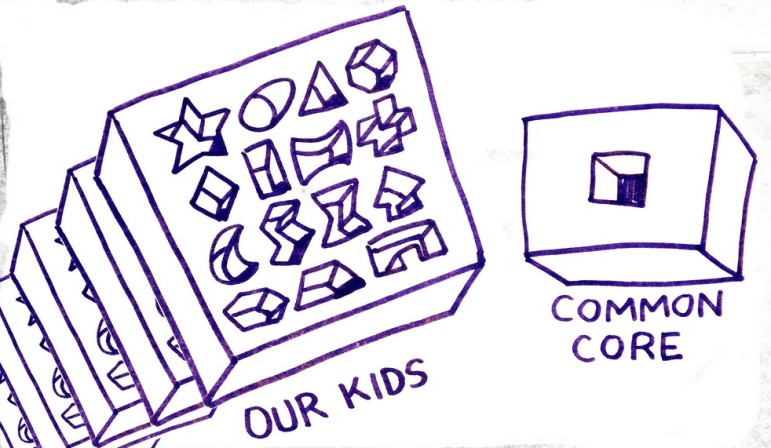
September 11, 2015; San Jose Mercury News
The California Department of Education recently released the results for the Smarter Balanced Assessment Consortium’s (SBAC) Common Core assessment test, which was used for the first time to measure the performance of 3.1 million students for the 2014-15 school year. Taken on their face, the results are disturbing. Looked at more closely, they challenge the prevailing wisdom about how to improve our public educational systems.
As reported by the San Jose Mercury News:
A majority of students failed to meet state standards in math and English—with a stark racial achievement gap despite decades of efforts to close it…performance correlated with family and community wealth, language ability and ethnicity. […] While 72 percent of Asian students and 61 percent of white students statewide met or exceeded standards in English, only 32 percent of Latino students and 28 percent of African-American students matched that achievement. In math, scores were lower and the gaps wider: 69 percent of Asians, 49 percent of whites, 21 percent of Latinos and 16 percent of African-Americans met or exceeded standards. Among students from low-income families, scores also lagged. Only 31 percent met or exceeded standards in English, and 21 percent did so in math.
With the results in hand, educators, policymakers, and parents now have the challenge of deciphering what they mean. Are these poor outcomes just an artifact of changing test formats? Are they as expected, since the new test intentionally raised the bar for passing? Or do they really tell us that the strategy for “reforming” the nation’s public education system is deeply flawed?
Since this is the first year this specific test was used and its expectations are so different from previous tests, perhaps it’s just best to wait a few years before we draw any conclusions? This was the approach recommended by state education officials, who “stressed that scores from the inaugural year of the Smarter Balanced Assessment Consortium form a baseline for future measurement, and no conclusions can be drawn” from comparing them to the results of previous state tests.
“It’s unreliable to try to make any comparison,” said Tom Torlakson, state superintendent of public instruction. “It’s apples to watermelons.”
Sign up for our free newsletters
Subscribe to NPQ's newsletters to have our top stories delivered directly to your inbox.
By signing up, you agree to our privacy policy and terms of use, and to receive messages from NPQ and our partners.
For others, the disappointing results should be seen as a clear marker of improvement still needed. Howard Blume, writing in the L.A. Times, observed that supporters of the test felt it gave a more accurate picture of the educational challenge before us. He cited Chris Minnich, executive director of the Council of Chief State School Officers, who observed that this year’s results are “going to show the real achievement gap”:
We are asking more out of our kids, and I think that’s a good thing, [but] there’s no question that when we raised the bar for students that we’re going to have to support our lower-achieving students even more so than we are now.
Executive Director Joe Willhoft said, in a press release describing this year’s tests, that “because the new content standards set higher expectations for students and the new tests are designed to assess student performance against those higher standards, the bar has been raised. It’s not surprising that fewer students could score at Level 3 (passing) or higher. However, over time the performance of students will improve.”
But maybe the results are showing us that our problems lie not with students and teachers, but with our basic strategies? Maybe whether the gap is bigger is not the important part of California’s test story. The fact is that a different test continues to tell us that a serious racial and economic gap exists. Rather than being seen as a measure of individual student learning, or of teacher and school performance, it should be seen as a measure of how effective the strategy of school reform has been.
The terms of two U.S. presidents have been devoted to reforming implementing a model of school reform based on increased choice, core standards, increased testing, devaluing teachers, and privatization. Is that time not long enough to expect to see improved outcomes and the closing of gaps between groups of students? You would think so, but the California results, which mirror the recently released national SAT results, seem to tell us it’s just not working.
In looking at the meaning of the recently reported decline in SAT scores, Carol Burris pointed out that Cyndie Schmeiser, chief of assessment of the College Board, advised that the disappointing results be seen as a challenge to our approach to the problem. “Simply doing the same things we have been doing is not going to improve these numbers. This is a call to action to do something different to propel more students to readiness.”
After 15 years of a failing national strategy, her words would serve us well as we consider what California’s results should be telling us.—Marty Levine













